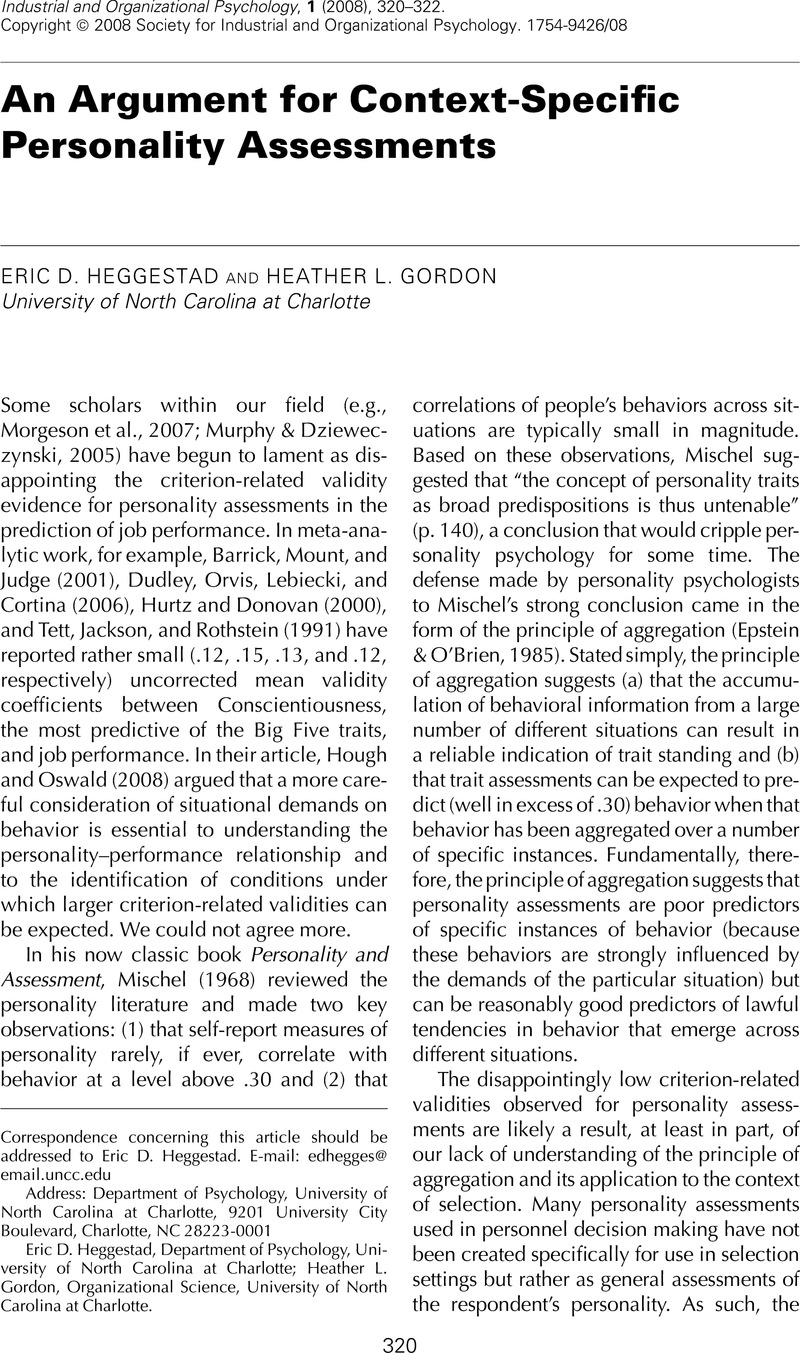Crossref Citations
This article has been cited by the following publications. This list is generated based on data provided by Crossref.
Oswald, Frederick L.
and
Hough, Leaetta M.
2008.
Personality Testing and Industrial–Organizational Psychology: A Productive Exchange and Some Future Directions.
Industrial and Organizational Psychology,
Vol. 1,
Issue. 3,
p.
323.
Bowling, Nathan A.
and
Burns, Gary N.
2010.
A comparison of work-specific and general personality measures as predictors of work and non-work criteria.
Personality and Individual Differences,
Vol. 49,
Issue. 2,
p.
95.
Eschleman, Kevin J.
and
Burns, Gary
2012.
The utility of general and school-specific personality traits and an examination of their relationship over time.
Learning and Individual Differences,
Vol. 22,
Issue. 4,
p.
537.
Mussel, Patrick
Spengler, Maik
Litman, Jordan A.
and
Schuler, Heinz
2012.
Development and Validation of the German Work-Related Curiosity Scale.
European Journal of Psychological Assessment,
Vol. 28,
Issue. 2,
p.
109.
Mussel, Patrick
2013.
Introducing the construct curiosity for predicting job performance.
Journal of Organizational Behavior,
Vol. 34,
Issue. 4,
p.
453.
Woo, Sang Eun
Jin, Jing
and
LeBreton, James M.
2015.
Specificity Matters: Criterion-Related Validity of Contextualized and Facet Measures of Conscientiousness in Predicting College Student Performance.
Journal of Personality Assessment,
Vol. 97,
Issue. 3,
p.
301.
Ellingwood, Holly
Williams, Kevin M.
Sitarenios, Gill
and
Solomon, Joanna
2020.
Psychometric Properties of a Contextualized, Actuarially Informed Assessment for Law Enforcement Personnel Selection: The M-PULSE Inventory.
Journal of Police and Criminal Psychology,
Vol. 35,
Issue. 2,
p.
191.
Williams, Kevin M.
2022.
The Occupational Performance Assessment–Response Distortion (OPerA-RD) Scale.
Journal of Personnel Psychology,
Vol. 21,
Issue. 4,
p.
185.
Bugaj, Till Johannes
Schwarz, Tim Alexander
Terhoeven, Valentin
Nagy, Ede
Cranz, Anna
Friederich, Hans-Christoph
and
Nikendei, Christoph
2023.
Measuring an understudied factor in medical education – development and validation of the medical curiosity scale.
Medical Education Online,
Vol. 28,
Issue. 1,
Junça Silva, Ana
and
Caetano, António
2024.
How curiosity affects contextual performance: an emotional daily dynamics perspective.
International Journal of Manpower,
Vol. 45,
Issue. 10,
p.
59.
Junça‐Silva, Ana
and
Caetano, António
2024.
How was your day? A within‐person analysis of how mental health may moderate the route from daily micro‐events to satisfaction after work via affect and contextual performance.
International Journal of Psychology,
Vol. 59,
Issue. 6,
p.
891.
Bowling, Nathan A.
Michel, Jesse S.
Islam, Md Rashedul
Rotch, Michael A.
Wagner, Stephen H.
and
Zelazny, Lucian
2024.
What’s holding you back? Development of the Multi-Facet Organizational Constraints Scale (MOCS).
Journal of Business and Psychology,
Vol. 39,
Issue. 6,
p.
1211.
Meuser, Jeremy D.
and
Smallfield, Jarvis
2025.
On the Problem of Generalized Measurement in Management Research: It is Criminal NOT to Frame Your Usual Suspects…Well, Usually.
Group & Organization Management,



